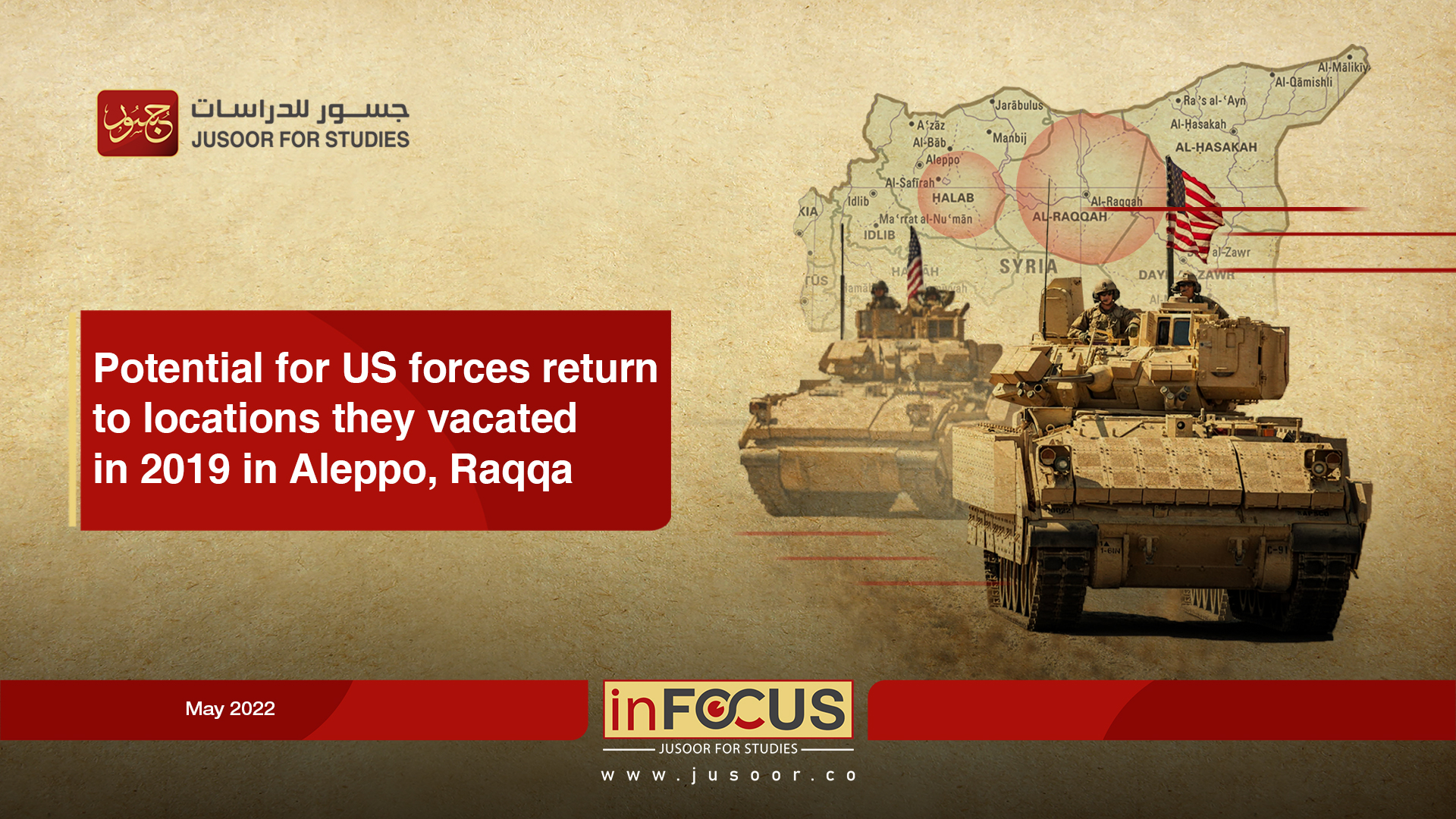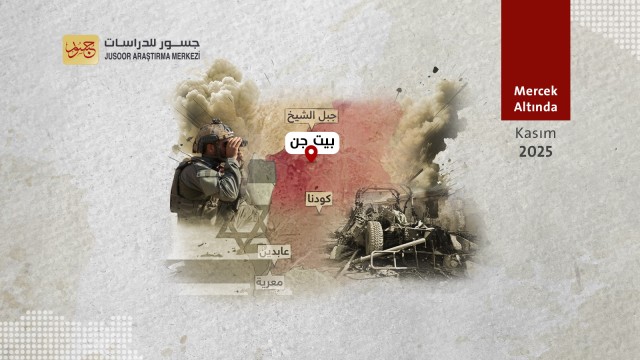Potential for US forces return to locations they vacated in 2019 in Aleppo, Raqqa
Font Size
Potential for US forces return to locations they vacated in 2019 in Aleppo, Raqqa
On the morning of Sunday, May 15, 2022, an American military convoy arrived in one of the military posts in the countryside of Aleppo and Raqqa that US had previously evacuated at the end of 2019 during Turkey's Operation Peace Spring.
The convoy was stationed at the base of Kharab Eshq, adjacent to the Lafarge cement plant in the southern countryside of Ain Al-Arab / Kobani, northeast of Aleppo.
Such a move by the American forces to return back may be an indication of their intention to redeploy in the rest of the military sites that they had vacated at the end of 2019. It is a step through which the United States may seek to achieve a number of goals for the time being, the most important of which are:
• Expressing its interest in the Syrian file again, while the policy of the U.S. President Joe Biden's administration towards Syria has been increasingly cleared, which, in turn, reflects the U.S desire to take a greater role and to break the stalemate the Syrian file is going through, which leads to putting pressure on the rest of the actors, especially Russia and Iran.
• Seeking to activate the role of the United States as a mediator and guarantor between Turkey and the Syrian Democratic Forces (SDF), with the recent intensification of mutual escalation between the two parties, especially in the Ain al-Arab/ Kobani region. If this endeavor is based on an understanding with Ankara, it may result in a new document similar to the Sochi Memorandum of Understanding (2019), in which the US replaces its Russian counterpart. But if it is a unilateral move in terms of coordination and implementation, the main purpose of it is to try to prevent the Turkish forces from launching a new military operation in the region targeting the SDF and the Kurdistan Workers Party (PKK).
• Preparing for the early recovery stage, especially since the US forces’ move was preceded by granting an exception to the sanctions of Caesar’s Law for companies wishing to work in a number of investment and service sectors within the SDF and the Syrian National Army-held areas, with the exception of Afrin, especially since the Kharab Eshq base is adjacent to the French cement Lafarge, which is a factory that stopped working since mid-2015, is considered the most important facility at this stage, with preliminary information on the existence of a plan to maintain and restart it by the company that owns it or another company investing in it.
However, given the multiplicity of local and international actors in the region, the redeployment of US forces in the region makes these forces primarily responsible for creating a stable and appropriate security environment for the success of the early recovery plan. Thus, a pledge to expel the PKK from the region, to prevent targeting the area and the facilities within by Turkish forces in the event that the members and cadres of the PKK exploit these facilities; By either controlling over the them or hiding inside, as happened in other facilities, especially the electricity transmission stations in the areas of Tal Tamr and Al-Malikiyah in the al-Hasakah countryside region.








